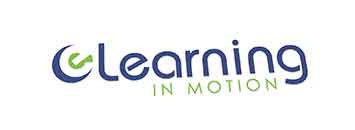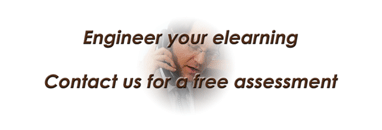With tons of resources out there on how to conduct a successful webinar for eLearning it would a reasonable approach to follow those suggestions and skip this article. But that would be a mistake.
See, most of the tips and suggestions you find out there focus on a webinar for promotional or informative purposes, which does not require a lot of planning and design. Sometimes, the only thing that gets prepared is the slides being presented during the live session.
But if you want to use those recordings for other products you can sell such as online courses, a regular webinar set up will not be enough. You will have to sit down and create a design plan for instruction and production, which should lead to an eLearning course that will work (that is, where your learners will learn something.)
Once the whole packaged online courses are finished and released, I would suggest that you give to course to a few test subjects that could give you a fast feedback. You can use this data for a review of the design, maybe troubleshooting the and enhancement of the course overall.
Designing a webinar for eLearning
Some part of the design process should deal with the creation of material and curation of resources that attendees could cover before showing up to the actual webinar. This is just like the readings that college students cover before attending the actual lecture. The idea is that after reading the material, they would be more informed of the subject and whatever questions that might come up during the reading could be asked to the instructor during the lecture.
But with eLearning we have to go a step further. The resources do not have to be reading materials alone. You can conduct discussions among students, you can ask students to do a brief presentation. In the next section we will talk about adding interaction to the Q&A part of the webinar.
Make it easy for students to ask question during the webinar
Incidentally, I have many times asked myself, while conducting or hosting webinars, why is it that attendees would stay silent during the Q&A part, and not ask many questions to the presenter? There are many reasons for this, and it is my experience that one of the reasons is that they don’t know what to ask.
I have found effective and interactive the addition of some kind of tool or website where they can post their questions while the seminar is running. I know many webinar solutions have a chat box where they can pose those questions, but the problem I find with this is they get lost in the conversation, the chat box becomes an endless scrolling nightmare, it makes finding questions difficult.
When the Q&A section starts, go that website and read each question, answer right there, one by one. If you run out of time, answer the remaining questions and send the answers by email to each attendee.
Introduce interactions in a webinar for eLearning
Below are some suggestions on what other learning objects you could create to prepare your webinar attendees for the actual event so that they can ask pertinent questions during the live session,
- Post some reading material (short articles, papers, sections of books and so on),
- Post some link to web resources such as blogs, wikis, online papers,
- Create a social media account for them to post their thoughts (seed the discussion with prompt questions), you could use Facebook, Google+, LinkedIn, or create a hashtag in Twitter, or create a discussion forum in your website, if you can,
- Create online activities such as games for eLearning, polls, interactive websites (with animations, simulations, short games, apps),
- Post links to short videos related to the subject to be discussed.
I would like to put you at ease with respect to games for eLearning. That would seem to be a huge investment but these days that is not the case. There are both free and paid solutions that you can integrate in your online courses.
These are some ideas but in fact there are other eLearning objects you could design for a webinar for eLearning, which you can later use in the online courses. For example, interactive quizzes they can solve while the webinar takes place (you can edit that out late.
At eLearning in Motion we can help you in the design process of your eLearning program that could cover pre-webinar learning objects that can later be integrated to the final online course, this will give context to the recorded webinar once it is published in the final eLearning course.
As always, find us in social media. You can share this content by using the buttons below. If you have questions and comments, use the form at the bottom of this page, or contact me directly, and I will get back to you as soon as I can. Thank you for reading this post.


